So you have decided to turn your yard into a space for relaxation. Or maybe you have just bought a new piece of raw, uncleared property. Either way, the chances are pretty good that you are be staring at land that is overgrown with brush and small trees that you need to clear.
In addition to clearing your property of vegetation, you may be wondering what you should be doing about different pests around your house. For instance, what should you do if you have
In addition to clearing your property of vegetation, you may be wondering what you should be doing about different pests around your house. For instance, what should you do if you have earthworms on your lawn?
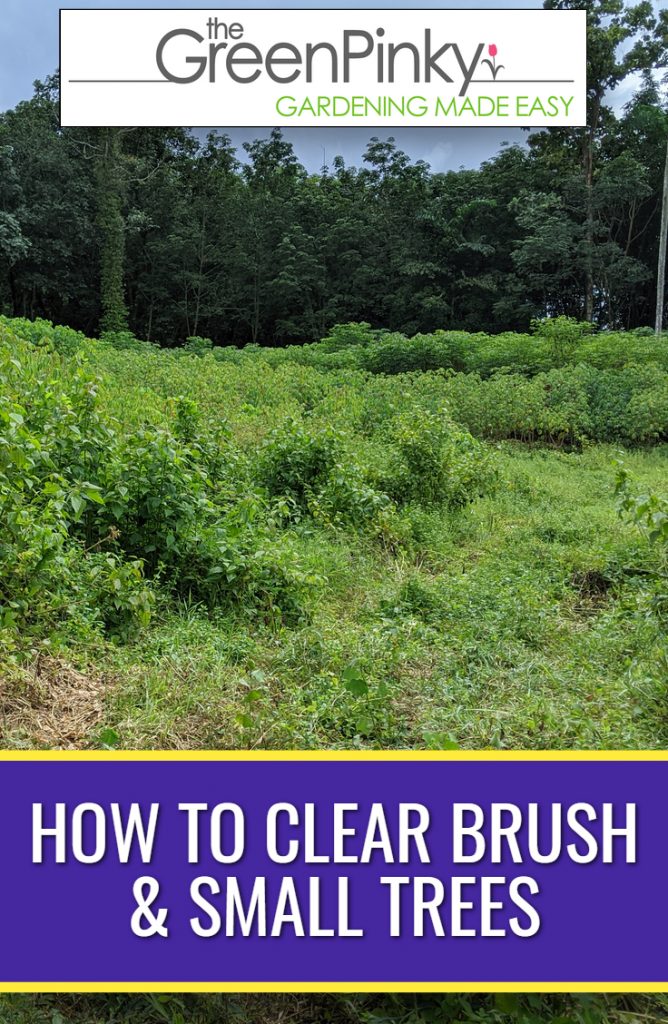
Clearing brush and shrubs is an involved process that will take some planning along with the proper tools and equipment to get rid of the overgrowth in your lawn or property safely.
So if you’re staring out at an expanse of your ground that has run amok with unsightly small trees and overgrowth that you want to remove, but you feel overwhelmed with the task, do not be discouraged.
You can find the answers to all of your questions right here.
In this article, you’ll find a strategy – a plan of action for the best way to clear your yard or other areas of your property of overgrown shrub and small trees. In addition to the step-by-step strategy, you’ll also learn about the equipment and tools for you will need to clear brush and shrubs and how you can use them safely.
So if you’re feeling overwhelmed when you stare out at your overgrown backyard or a new piece of property, you are not alone. It is a big order to fill.
However, armed with the information you are about to read, rest assured you can do this.
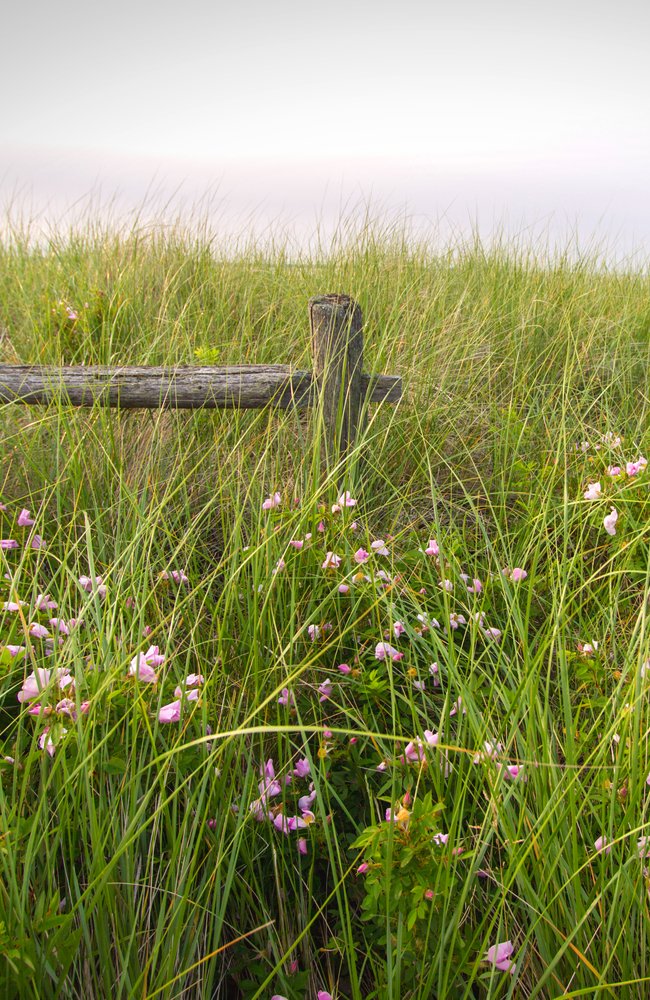
Tools for Clearing Overgrown Land
A crucial part of the plan for the best way to clear your overgrown land is knowing what equipment and tools you need for the job. While some are standard hand tools, there are some pieces of heavy-duty equipment that you may not be familiar with.
Brush Mower
A brush mower is an essential tool to clear brush and small trees on large areas of property.
This powerful piece of heavy-duty equipment can cut through small trees up to 3 inches in diameter. Needless-to-say, it will clear brush without a problem.
It is available in two different styles.
The walk-behind version is self-propelled and used to clear brush and small trees in areas that can be covered on foot. An example would be a backyard overgrown with woody brush.
It also comes in a tow-behind style for rougher and larger terrain like fields and woodlands. You’re probably familiar with its other name, a “brush hog.”
A brush mower, or brush hog, makes brush clearing a breeze. It is also a powerful and potentially dangerous piece of machinery. Make sure to read the owner’s manual before you use it to ensure you operate it safely.
Brush Grubber
While forming your strategy to clear brush, shrub, and small trees, you notice that you only have a few single saplings or small sections of overgrowth and shrubs. You know the shrub or trees are too big for your lawn mower to handle, but you also know that a big, bad brush mower would be overkill.
What’s the solution?
It would help if you had a brush grubber.
A brush grubber is a set of metal jaws lined with spikes that dig into a small tree or tree stumps. Those jaws are connected to a chain on the opposite end. Once the jaws are set into the tree, you attach the chain to your truck, tractor, or ATV and pull.
What makes it such an effective tool is that it pulls smaller trees and stumps along with roots out of the ground.
The only problem is the hole that the roots leave in the ground. What you do with that hole depends on where the tree removal took place. If the job was done in a large, open field, then just backfill the hole with dirt.
However, if the tree was removed in your yard, there are a couple of things you can do. You could just backfill the hole and leave it be. But who wants a perfect space for weeds to take hold and grow in their lot? Nobody.
You can overseed the area so that grass will grow. You can mulch it over and plant flowers or bushes you would like to grow in the area. Use your imagination.
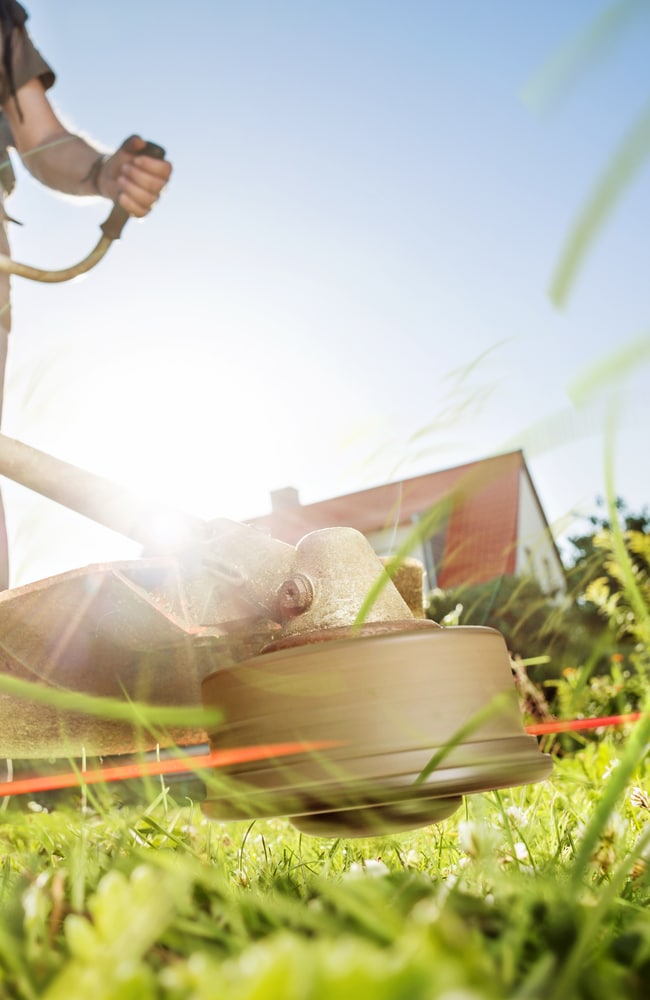
String Trimmer
Don’t get this confused with the weedeater you have in your shed. The standard weedeater can be used to clear thin weeds and grass and may play a small role in your strategy to clear brush and shrubs. However, it is outmatched when it comes to thicker areas of unwanted bushes, shrubs, and especially small trees.
The heavy-duty string trimmer, also called a brush cutter, comes in different styles and with a different set of capabilities.
The brush clearing string trimmer is available in both hand-operated and walk-behind styles. Choose the type that best fits the task at hand. If you are going to clear brush on a large area or if the terrain is rough, the self-propelled version is probably the tool for the job. For a smaller area like your yard, you can choose the hand-operated style.
The string on a trimmer used to clear brush is thicker and more robust than a standard weedeater.
Different attachments are specifically designed to be used with a brush clearing string trimmer. Some attachments are designed for cutting woody shrubs and brush up to ⅜ of an inch thick. Other attachments are blades that are capable of cutting down small trees up to 3 inches thick.
Quite a bit different than your standard weedeater.
Stump Grinder
Stumps that have been left in the ground can be a dangerous eyesore. They’re too big to be dug out and cannot be safely burned out. What tool can you use?
A stump grinder is a tool for clearing stumps out of the ground by grinding them into small wood chips.
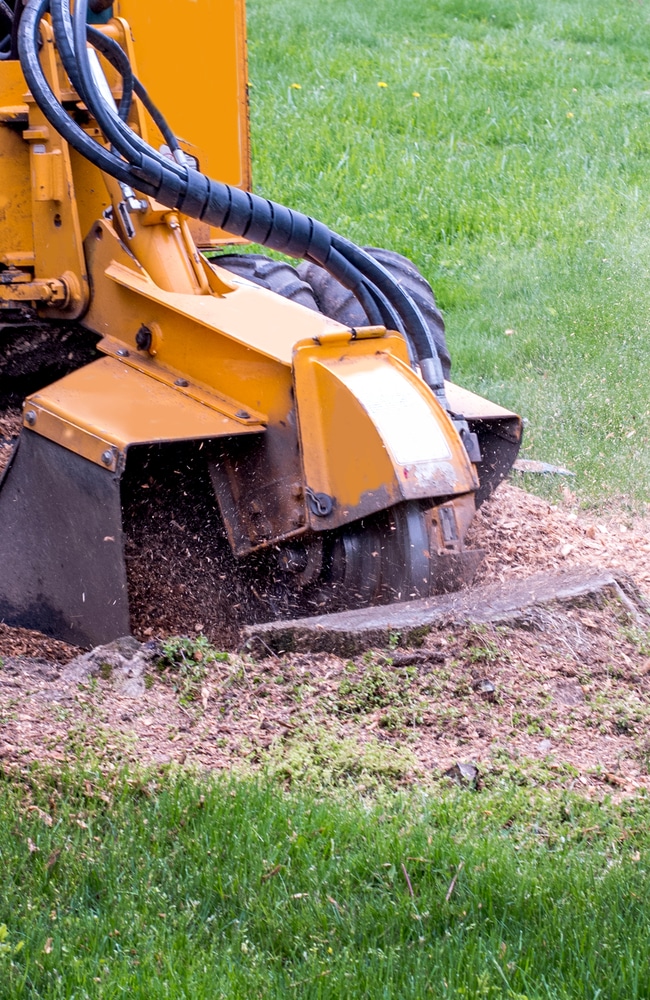
There are several different styles of stump grinders. They come in the following styles:
- “Handlebar” Stump Grinders
This is the smallest style of grinder. It is hand-guided and pushed to the stump you intend to remove.
- Tow-Behind Stump Grinders
These grinders are attached to your truck, tractor, or ATV and pulled into place at the work site.

- Riding Stump Grinders
These grinders are about the size of a small tractor. They are controlled from a driver’s seat.
- Skid Stump Grinders
These grinders have tracks like a tank and are driven from either behind or on top. The tracks are effective on soft, wet ground that other equipment may not reach without getting stuck.
- Skid Steer Attachments
Stump grinders are also available as an attachment to a skid steer. The grinder attachment is operated by the same control arms used for other attachments like the bucket.
A professional land clearing company usually does stump grinding because of the danger involved in their operation. So before you decide to make this a DIY project, make sure you have the skill and knowledge to operate this machine safely.
Stump grinders can be rented from your local garden center or equipment rental company. Before you decide to rent one and tackle this project yourself, you need to do an honest assessment of your operating skill. You also need to consider the size of the stumps you need to remove.
Stump grinders available for rental by homeowners are generally less powerful than those used by a commercial stump grinding service. A stump is frequently too large and too hard for the small rental grinders to handle.
Sometimes, it is best to leave stump grinding to the pros.
If your stump is close to your house or any other structure, you might need to consider other options such as rotting out the trump. This will take more time, but it would be the safest alternative.

Chainsaw
More often than not, the trees on your land are too big to be taken down by the aforementioned equipment. That’s where the chainsaw comes into play.
It is an indispensable tool for cutting down the large trees on your property that you need to remove.
When you use a chainsaw for cutting down trees, take care to use proper technique so the tree falls safely in the direction you want it to go.
If you are unfamiliar with the correct method for falling a tree, take the following steps:
- Mark the Trunk
Draw a circle you can see around the trunk about a foot off of the ground.
- Cut an Angle
At the mark, on the side you would like the tree to fall towards, cut at a 45° angle towards the ground about ⅓ of the way through the trunk.
- Cut a Wedge
Cut a 45° wedge into the opposite side of the tree. The wedge should be cut slightly above the mark on the tree and should go about ½ of the way through.
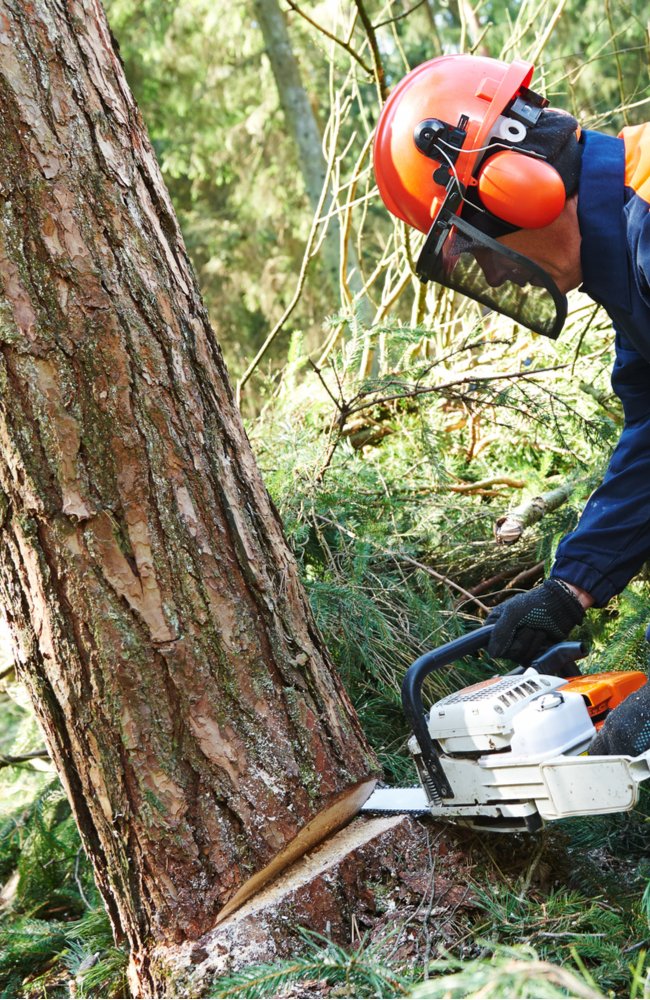
- Push it Down
Push the tree on the side where the wedge was cut out. If it does not fall right away, use your bow saw to continue cutting until it falls safely to the ground.
- Cut it Up
Cut the tree into smaller, more manageable pieces for removal.
The Remaining Tools and Materials
Now that you’ve got the bigger power tools and equipment figured out. Here’s a list of the hand tools you’re going to need when you clear brush and trees off of your land.
- Shovel
- Bow Saw
- Pruning Shears
- Tree Pruner
- Rake
- Ax (if you don’t have a chainsaw)
- Contractor’s Trash Bags
- Additional Topsoil
You’re almost ready to head out and get to work. Remember, safety is the priority, no matter what you’re doing. So make sure you protect yourself with the following items:
- Safety glasses
- Long Sleeves
- Pants
- Gloves
- Helmet
- Ear Plugs

How to Deal with Overgrown Land
You have all the equipment gassed up and ready to go, and you have donned yourself with the suggested safety gear. Now you just need a plan of attack. This is where you form your strategy for the best way to clear your land of overgrown brush and get rid of small trees.
Simply follow these steps as a guide when you are building your plan.
Step 1: Walk the Land
This is when you find out what you are up against and what you are going to do about it. Bring a notepad and pen along with something to mark certain features of the landscape (spraypaint or flags are both good choices).
As you inspect the ground, take note of potential problem sections. This can be woody undergrowth, a rocky or wet area, or anything else that might pose a problem.
Mark the trees and stumps you want to clear with spraypaint or flags so you don’t lose track of them.
This is the step where you draw out your map and plan of action to guide you. That way, you won’t get lost in the middle of the journey.
Step 2: Plan Ahead for Debris Removal
What you do here depends on the size of the project.
For bigger projects, there is the very real possibility that your local trash collector may not be able to handle the cleanup. If this applies to you, you can always rent a yard waste container and fill it with debris to your heart’s content.
For smaller projects, you can try to coincide with your project with your community’s trash removal day. Most disposal companies can handle a moderate amount of yard waste. Just be sure that you aren’t breaking any local ordinances by putting your debris out on the sidewalk with the rest of the trash.
Remember, regardless of your project’s size, you always have the environmentally friendly option of composting the debris so you can use it later to feed your lawn or garden.
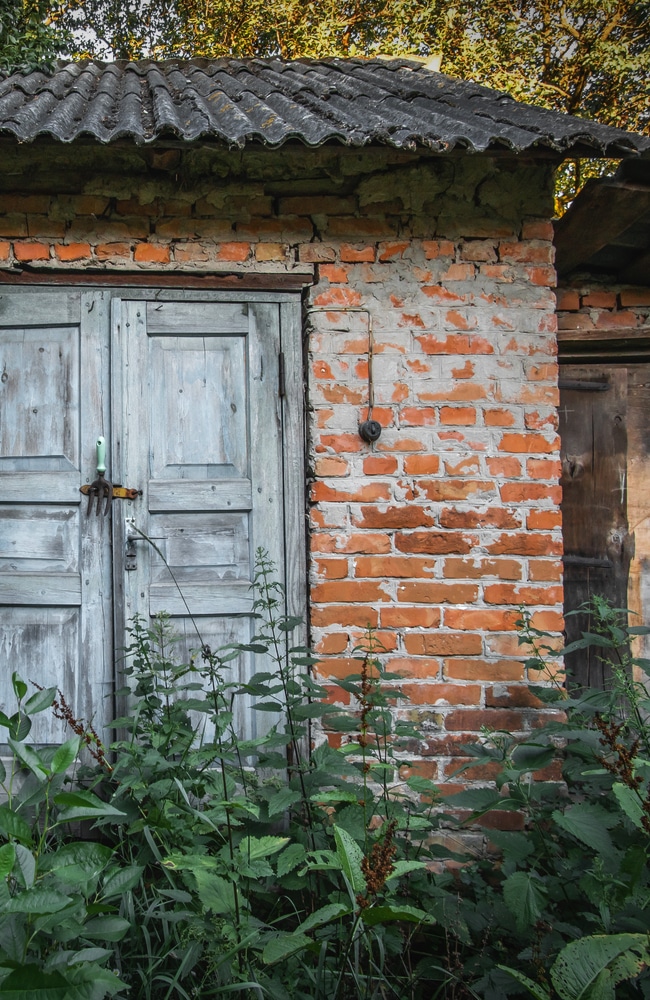
Step 3: Cut Down the Trees
Once you have marked your trees that you want to cut down, use your chainsaw (or ax) and bring them to the ground. Once they have fallen, cut them into smaller pieces for easier removal.
Return to each stump and prepare the site for the stump grinder. This consists of cutting the stump as close to ground level as you safely can. This will make grinding the stump easier and faster.
Step 4: Get Rid of the Stumps
If you have decided to use the stump grinder yourself, now is its time to shine. Grind each stump that you have marked on your land. One tip is to not worry about the roots after you grind the stump. Cover the area with the sawdust from the stump or the additional topsoil, and the roots will naturally decompose in the ground.
Don’t forget that you have the brush grubber in your arsenal of tools.
It’s safer than using a grinder and pulls the entire stump along with its root system out of the ground. Just fill the hole in with the topsoil you brought and you’re done.
Remember that the grubber is designed for smaller trees and stumps. Read the owner’s manual to find the specific capabilities of the one you are going to use.
Step 5: Clear Shrub
The size of the brush and shrubs you need to remove will determine what pruning equipment you need.
Smaller brush can be pulled out by hand. Some will require the use of a shovel to dig the root system out of the ground.
The easiest way to deal with any type of growth you encounter when you clear brush and shrubs is to break out the brush mower. It can handle thick entanglements of brush along with smaller trees.
For established and woodier brush, you can always use the jaws of your brush grubber to pull it out of the ground with ease.
Step 6: Clear Out the Undergrowth
Now that you have removed the trees and the heavier brush, its time to get down to the weeds, vines, and unruly grass that cover the landscape.
Depending on the height and heartiness of the undergrowth, you may be able to use your tree pruner to cut down vines and brambles.
The goal of removing the undergrowth is to cut it as close to the ground as possible. For thinner sections of undergrowth, a standard weedeater may work just fine.
However, frequently the undergrowth is thick, woody, and treacherous. In this case, use the string trimmer designed for heavier use. It will tame that unkempt and unruly undergrowth quickly and efficiently.
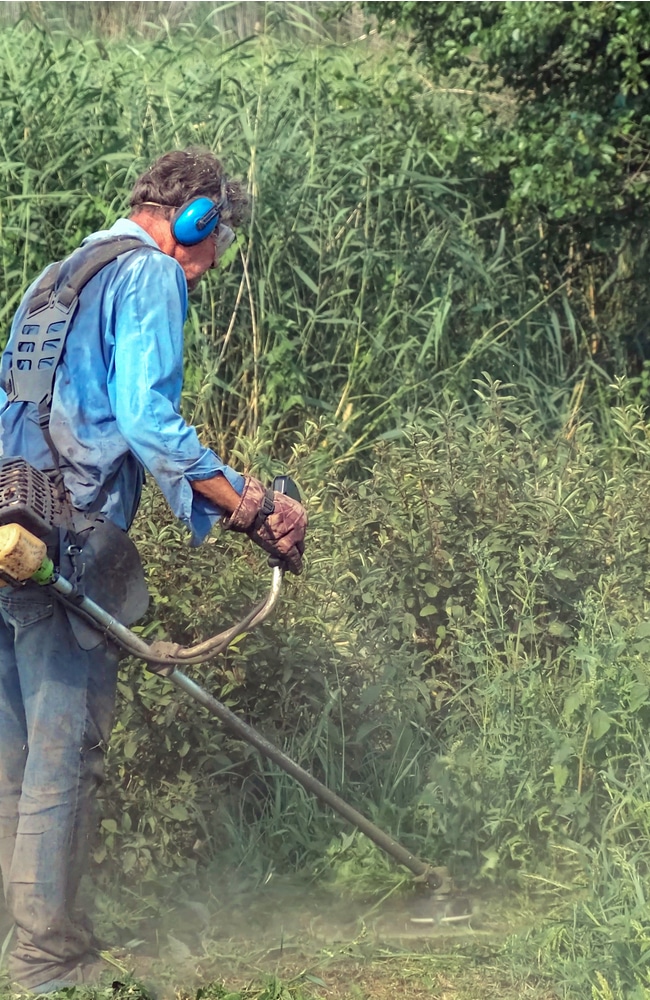
Step 7: Remove the Debris
You’re on the final lap of the project. Now you just have to clean up the trimmings and debris that are left behind.
For grasses and other undergrowth, grab your rake and bag the clippings for removal.
Be sure to check with your local disposal company about discarding yard waste with the regular trash pick-up. Some do and some don’t.
If you selected a yard waste dumpster, the rental company will retrieve it and dispose of its contents. This price is all included in your rental agreement.
If composting, make sure you aren’t putting anything poisonous (poison ivy, oak, or sumac) into the pile with the rest of the organic material.
Step 8: Enjoy the New View
You have worked hard with dangerous equipment to finish a taxing and troublesome project full of problems. So once the work is done and the tools are put away, you should step back and take it all in.
After all the work that you have done, you absolutely deserve to take a few minutes and appreciate it. In fact, you should take a before and after picture for comparison. You’ll be amazed at all the work you’ve done.


Hey Jeffrey. Thanks for the info. My yard is a bit different. I have a lot of Koa haole, leucaena, shrubs/small trees. I cut them down to the ground but it leaves a small 0.5-1 inch stump with a long tap root. Impossible to pull by hand and too small for the grubber. It’s a very vigorous plant and grows back quickly. It’s also in an area that I cannot use an excavator (elevated yard with walking access only). I’m thinking that I might need to burn out the remainder of the stumps. Is this okay or is there a better way.
Very informative article for person looking for info on clearing overgrown former pasture. Equipment and ideas for cleanup excellent. Thank you.